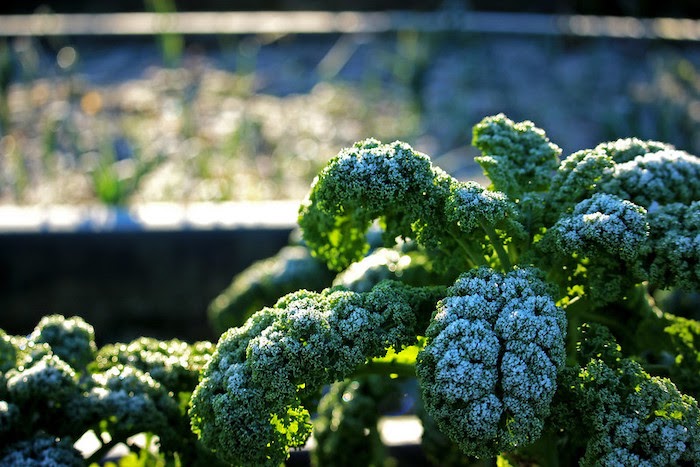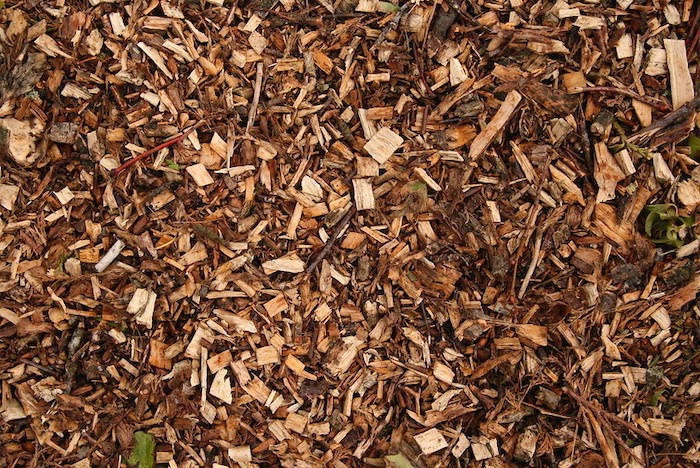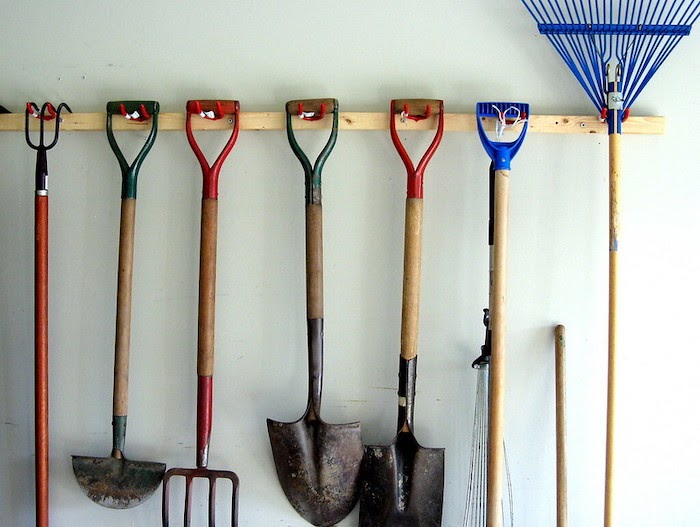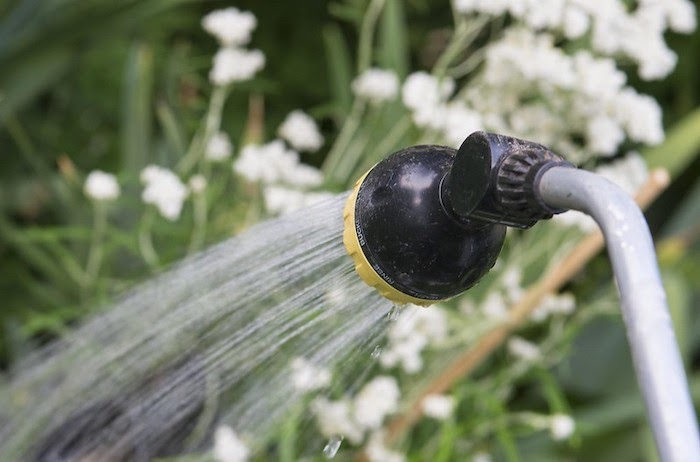
St. Louis is the Gateway to the West. It’s now also the Gateway to rooftop lettuce.
We’ve ranked St. Louis No. 8 in our study of America’s best cities for urban gardening. Today, we’ll show you how to winterize your St. Louis garden.
But why prepare your garden for the Gateway City’s coldest months? Winterizing your garden before the temperatures drop helps your vegetables and flowers spring into the next growing season.
Do the hard garden work now, and come next harvest, you’ll be enjoying the juiciest tomatoes with a cold Schlafly craft beer or born-in-St. Louis Budweiser.
To get started, check out our handy guide on how to winterize your St. Louis garden.
14 Ways to Winterize Your St. Louis Garden
1. Get others to help you

You needn’t winterize your garden alone. It can be a demanding job, especially if you have a large garden.
Get the family off their screens and bring them outdoors for a little gardening. If you have little ones, winterizing the garden can be a fun opportunity to introduce the joys of gardening.
Do you garden at one of St. Louis’s community gardens, like Gateway Greening or the downtown community garden? Invite your fellow community gardeners to help you winterize, and you can help them with their gardens, too.
St. Louis earned the eighth spot in our recent study on urban gardening because the Gateway City boasts the highest number of community gardens per 100,000 people.
Whether you garden in your backyard or a community setting, having all hands on deck will ensure no task gets overlooked.
An added bonus: Winterizing the garden is more enjoyable with company. Once you’ve spread the mulch, harvested the vegetables, and divided the perennials, treat the whole gardening gang with frozen custard.
2. Decide when to harvest

Photo Credit: Local Food Initiative / CC BY 2.0
St. Louis falls into USDA Hardiness Zone 6, which means the growing season is long enough for many of your favorite warm-season vegetables.
You may try to increase your garden’s growing season by delaying your harvesting time, but putting off the bounties of your harvest can be a gamble — like a trip to any of the area’s casinos.
So, what odds do you need to beat? The first frost.
An unexpected frost can destroy many vegetables, like your tasty tomatoes. As you toss these ruined vegetables, you’ll wish you had harvested them sooner.
But a frost isn’t always bad… Greens like kale, Swiss chard, and collards can become a bit sweeter after a light frost. Delay harvesting these vegetables, and you’ll have the house edge.
What about root crops? Crops like carrots, beets, parsnips, and rutabagas can survive a frost but they won’t make it through a hard freeze. Remember to harvest your root vegetables before the ground gets too cold.
3. Clean up plant debris and remove annuals

Your annual vegetables and flowers won’t sprout on their own next spring. That’s the thing about annuals: They grow only once a year, and you need to replant them.
Here’s what to do: Now that your annual flowers have bloomed and you’ve harvested the annual vegetables, remove the spent plant debris. Here’s why: Pests and diseases are looking to overwinter in some good real estate, and it’s best to limit their choices.
Toss the plant debris to help ensure your gardens remain healthy and pest-free next spring.
4. Pull the weeds

Don’t skip out on pulling weeds. It’s definitely not your favorite job in the garden, but it’s a winterizing task that must get done. Remove all the weeds from your garden beds as best you can.
Why is this important? Pulling weeds helps to remove real estate options for bacteria and pests to overwinter in.
5. Divide your perennials

Some perennials have a habit of growing too close together. As they begin to multiply, the flowers develop into dense clusters.
What’s the problem with overcrowded flowers? The roots and bulbs will begin to compete for air, space, and nutrients. You’ll need to divide your perennials before they clump up even more next growing season.
How to divide your perennials:
- Dig up the parent bulb carefully and remove loose dirt around the roots.
- Divide the plants by teasing apart the roots by hand.
- If the roots are difficult to separate, cut them with a sharp knife or split them apart with two forks.
- Ensure your divisions have an ample amount of roots before planting them back in your flowerbed.
The result: Next growing season, your flower beds should appear fuller and more spread out.
6. Cull the compost pile

If you have a compost pile in your yard, it’s time to get your hands dirty and put the old food scraps to good use in your garden.
If your community garden doesn’t have a compost bin, now may be the time to start one.
Here’s what to do: Your compost pile has had a whole summer to bake under the sun. Your food scraps and grass clippings should have decomposed into nutrient-rich organic matter by now.
Spread some compost over your flower beds and vegetable gardens. The organic material will replenish the soil and give your new growth a nutritional boost into the next growing season.
Now that there’s more space in the compost bin, it’s time to start composting next year’s nutritional booster. Rake up the fallen leaves and throw in the holiday scraps.
7. Bring your tender plants indoors

Winter hardiness levels vary among your greenery. Not every plant can survive a cold winter. A sudden drop in temperatures may not affect your hardy plants, but your less durable plants may die from the cold weather.
What’s the solution?: Bring your cold-sensitive plants indoors as houseplants (you’ll love the splash of color they add). The most vulnerable plants usually include tropicals, potted flowers, succulents, and tender bulbs.
Give your tender bulbs special attention. To protect vulnerable bulbs from frost and freezing temperatures:
- Remove the fragile bulbs from the soil and dry them. Keep in mind that storing moist bulbs may lead to rot.
- Dry the bulbs on trays in the garage or tool shed, but do this before temperatures start getting too cold at night.
- Store the dry bulbs in mesh bags.
- Add several sheets of paper between the bulbs to help absorb excess moisture.
8. Transition to the greenhouse or cold frame

You needn’t wait until early spring to start digging in the dirt again. Transition your gardening to a small greenhouse or cold frame and you can exercise your green thumbs all year.
Even when temperatures are freezing, a greenhouse offers a regulated climate for your garden. Get your greenhouse’s growing conditions just right, and you can be throwing a garden party through the winter.
Greenhouses range in size from small sheds to large buildings. If you want to go extra small, opt for a mini-greenhouse or cold frame.
9. Insulate with mulch

A 2- to 3-inch thick layer of mulch will help protect your plants from fluctuating temperatures. Mulch will ensure your plants stay cold throughout the winter and don’t become vulnerable to those unseasonable warm spells.
How it works: The mulch layer separates the garden soil from the winter air by creating an insulation barrier. The insulation helps keep cold soil temperatures consistent through the winter months.
Why mulching is important: Without insulation, some perennial plants may begin to grow prematurely during an unexpected jump in temperature. As temperatures start to fluctuate with the changing seasons, plants without an insulation barrier become susceptible to an unhealthy cycle of freezing and thawing.
Other mulch benefits: Organic mulch, such as wood chips or shredded leaves, also can help control weeds, prevent erosion, and add enhancing organic material to an autumn garden’s depleted soil.
10. Cover vulnerable plants

Your garden’s new woody plants may look tough, but they also need some protection this winter. Frigid winter winds can cause these plants severe winter damage, such as dryness, stress, and winter burn.
Here in Zone 6, St. Louis has a minimum average temperature of -10 to 0 degrees. When KMOX predicts a temporary freeze, cover your woody plants with burlap, landscape fabric, or blankets to keep them warm.
Your flowers will need some protection, too. Cover your flower beds with tablecloths, landscape fabric, or bed sheets to ward off the effects of a temporary freeze.
Take note: When the threat of frost has passed, remove these coverings to ensure your plants get enough sunlight and don’t get too warm.
11. Shut off the irrigation system

Even your irrigation system needs winterizing. Shut off the irrigation system and blow out the pipes before temperatures drop below freezing.
Why you need to remember this: Any water left inside your pipes may freeze and expand, leading to significant pipe damages and costly repairs (and less shopping money for the holidays).
Don’t forget to winterize your other water features. Have a garden pond or water garden? Before you get to winterizing these, consider the needs of your aquatic life.
Removing the water pump will protect the pump from freezing and breaking, but the lack of moving water in the pond may cause ice to form, which may kill your fish.
To remove the pump, or not to remove the pump, that is the question. Speak with a professional to determine the best winter strategy for your water garden or garden pond.
If you choose to keep your pond pump on through winter, perform routine winter maintenance to ensure it doesn’t freeze.
12. Clean your gardening tools

It’s time to scrape the dry, crusty mud off your gardening tools. You may have postponed your routine tool cleanings, but not any longer. Fall is the perfect time to finally get those tools squeaky clean and ready for next spring.
Why tool maintenance is important: Dirty tools can spread plant diseases and pests. You lower your chance of a bountiful harvest when your plants don’t get off to a healthy start.
Think ahead, too: Dull or damaged tools aren’t going to make your gardening chores any more enjoyable. Remember to keep them sharp and in good condition so you can slice through the soil with ease come springtime.
13. Give your garden a long drink

You don’t need to water your garden as much during the winter as you do in summer. Give your winter garden a deep watering a few times every month. The dry winter weather can be harmful to plant roots, so it’s best to provide your greenery with long, replenishing drinks.
But remember: Avoid watering the garden when the temperature is close to freezing. It’s best to water the plants on those unseasonably warm days.
14. Review this year’s successes

As you prepare the garden for winter, consider how you can make the next growing season even better. Whether it’s finding a way to bring more vegetables to the table or getting St. Louis locals more involved in urban gardening, every garden has room for improvement.
Reviewing this year’s successes will help you identify your garden’s strengths and weaknesses.
Pro tip: Building on a garden’s strengths instead of its weaknesses leads to more success.
Consider what brought you (and your fellow community gardeners) the most fulfillment this growing season. Doing so will help you plan the winterization process and how you’ll approach next spring.
For example, you may decide to toss a few underperforming coneflowers rather than divide them. If a perennial vegetable wasn’t a big success, you might want to remove it from the garden.
This will help create more space for a vegetable that produced a greater harvest this season.
The bottom line: The better you feel about your St. Louis garden’s potential, the more you’ll enjoy maintaining it, and the healthier and more successful it will be.
When to Call a Professional
Winterizing a garden can require a lot of work (especially if you ignored pulling weeds all year). Call a local landscape professional near you to help winterize your St. Louis garden.
A professional can winterize the irrigation system, prevent freezing pipes, and spread mulch and compost. They can also help maintain the landscape through winter.
Winterizing Your Garden Brings Some Peace of Mind
With your garden all tucked away for winter, you can enjoy the cold and not worry about your plants. Sled down Art Hill or skate at Steinberg Rink. Or just kick back by the fire with an Imo’s Pizza.
Come springtime, you can grow the vegetables and herbs to make your own St. Louis-style pizza.
Main image credit: Rictor Norton & David Allen / CC BY 2.0





